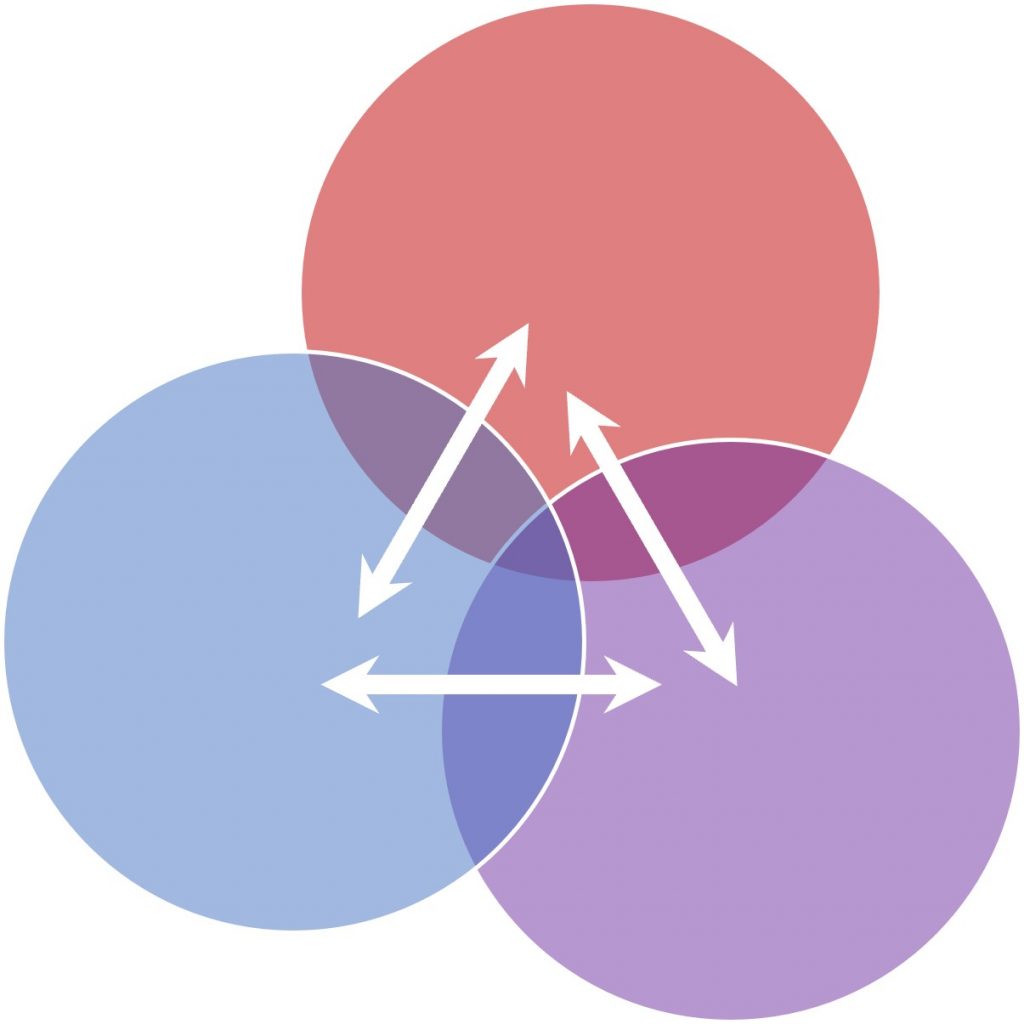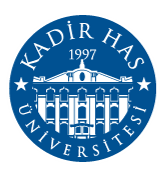Preprints
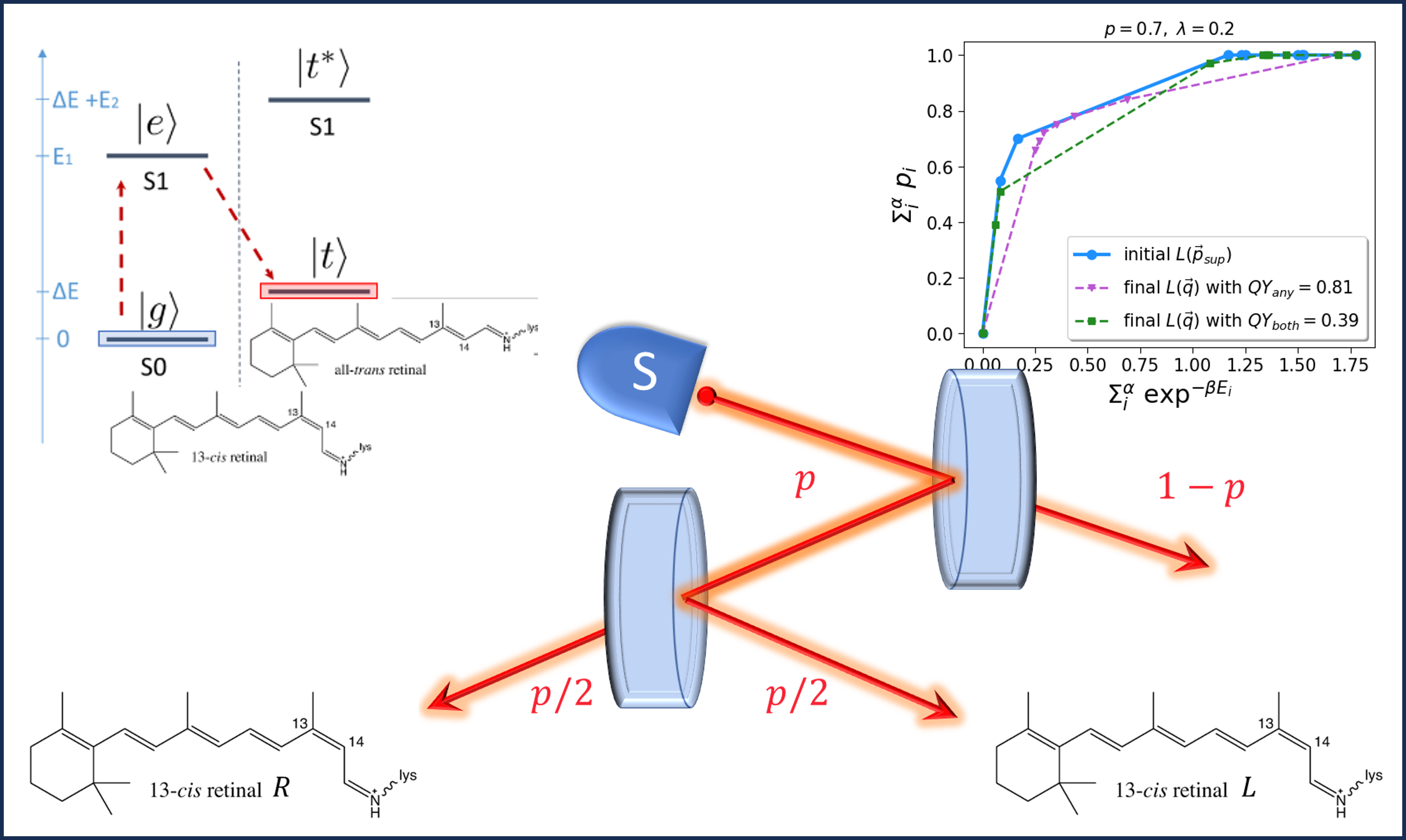
The resource theory of quantum thermodynamics has emerged as a powerful tool for exploring the out-of-equilibrium dynamics of microscopic and highly correlated systems. Recently, it has been employed in photoisomerization, a mechanism facilitating vision through the isomerism of the photo receptor protein rhodopsin, to elucidate the fundamental limits of efficiency inherent in this physical process. Limited attention has been given to the impact of energetic quantum coherences in this process, as these coherences do not influence the energy level populations within an individual molecule subjected to thermal operations. However, a specific type of energetic quantum coherences can impact the energy level populations in the scenario involving two or more molecules. In this study, we examine the case of two molecules undergoing photoisomerization to show that energetic quantum coherence can function as a resource that amplifies the efficiency of photoisomerization. These insights offer evidence for the role of energetic quantum coherence as a key resource in the realm of quantum thermodynamics at mesoscopic scales.
Read More: arXiv
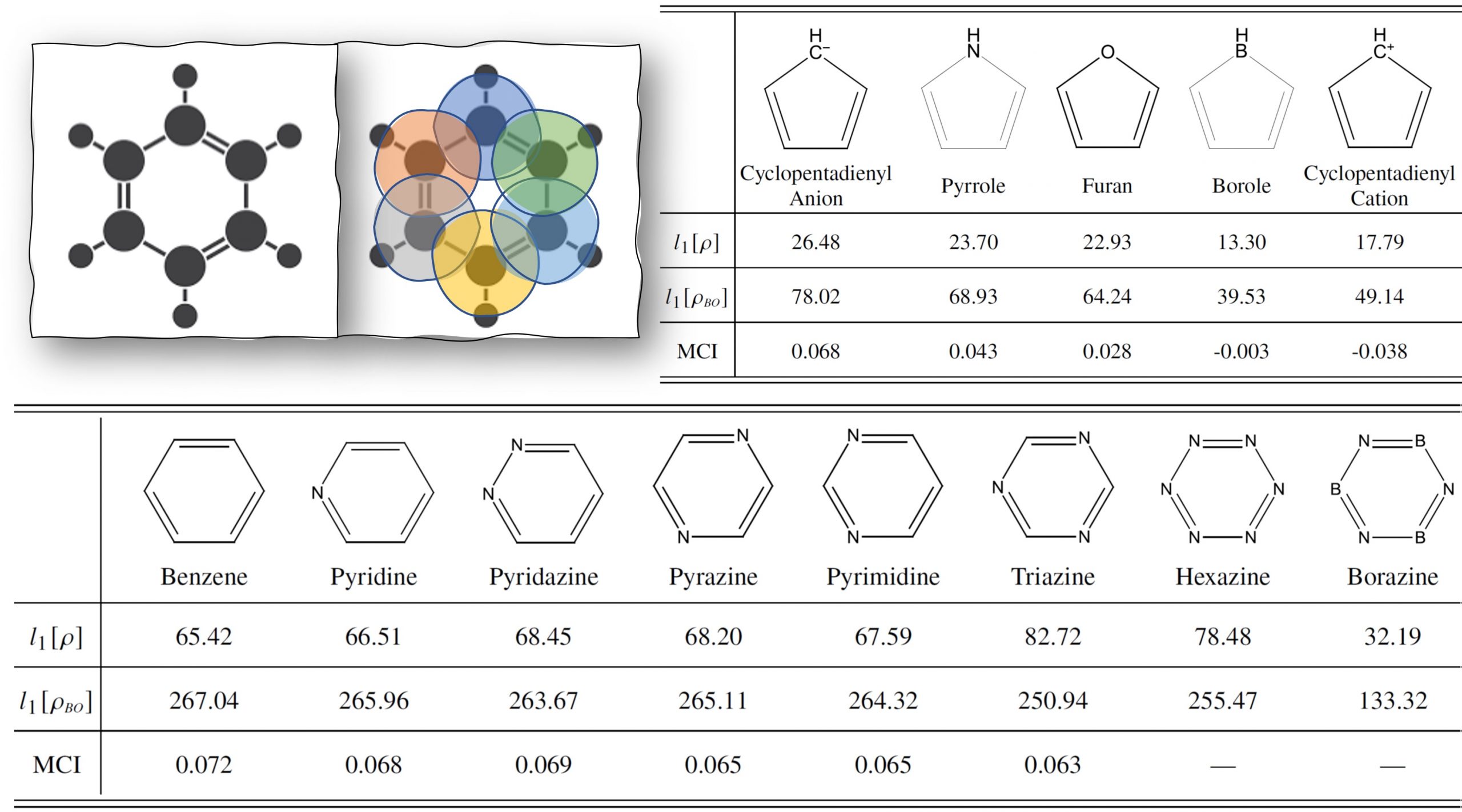
This letter investigates the applications and extensions of the resource theory of quantum superposition within the realm of quantum chemistry. Specifically, we explore aromaticity, a fundamental concept originally developed to elucidate the structural symmetry, energetic stability, and chemical reactivity of benzene and its derivatives. While aromaticity and its counterpart, antiaromaticity, are associated with the delocalization of electrons between nonorthogonal atomic orbitals, they lack a universally accepted and comprehensive definition. We demonstrate that the genuine quantum superposition exhibited by biorthogonal atomic orbitals effectively captures the aromaticity order of representative monocyclic molecules. These findings reveal that the quantum resource theories hold significant implications, offering fresh insights into our comprehension of chemical bonding phenomena.
Read More: arXiv
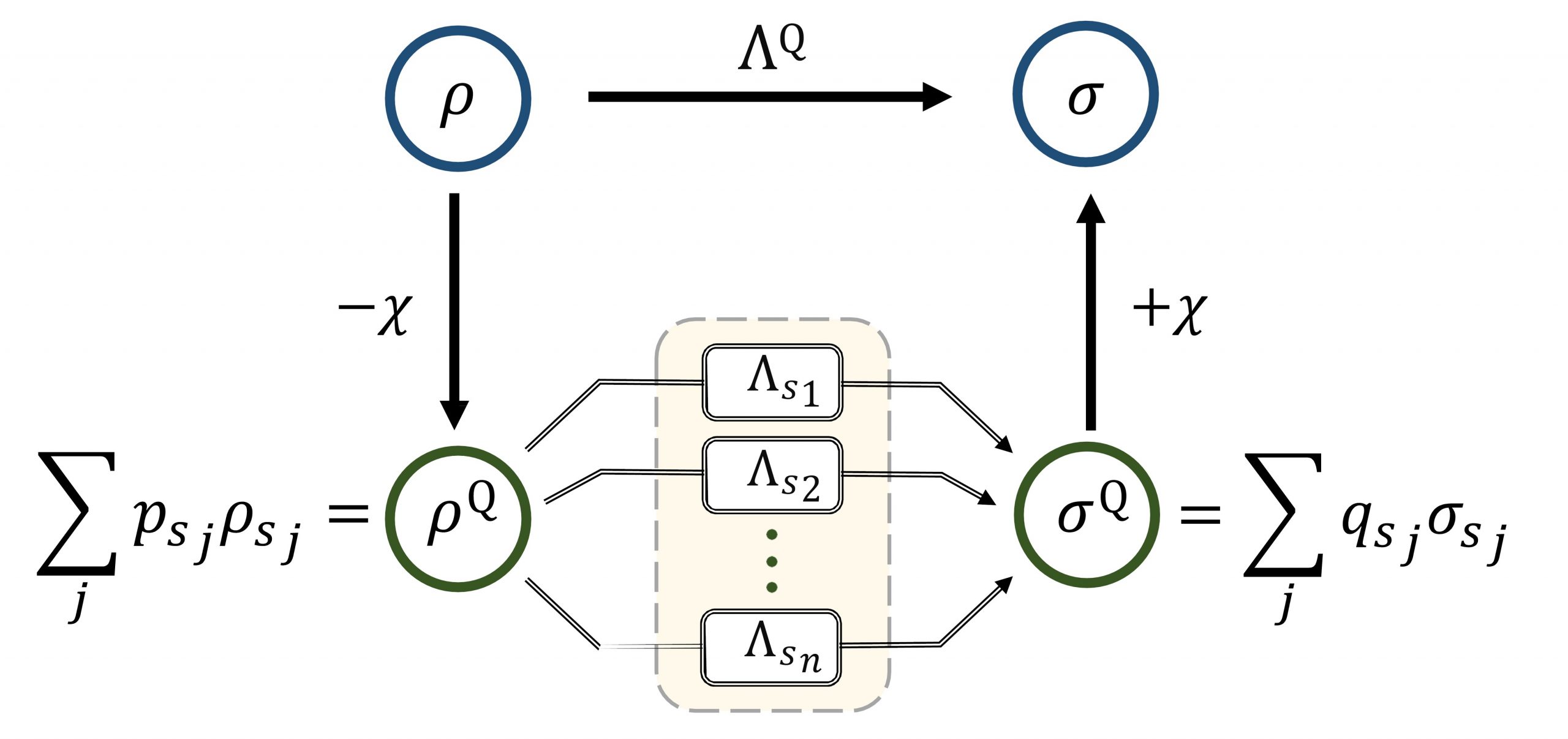
Superselection rules (SSRs), linked to the conservation of physical quantities such as parity or particle number, impose constraints on allowable physical operations in fermionic systems. This affects the amount of extractable mode entanglement possessed in a given state and its manipulation by the so-called entanglement-free operations. Here, we present a majorization-based algorithm for the mixed state transformations of bipartite mode entanglement, where the allowed operations (i.e., resource non-generating operations), that is, local operations and classical communication, are restricted by local SSRs. We then focus on the local parity SSR and investigate the possibility to relax the constraints imposed by it through a catalyst. In particular, we show that an ancillary mode system can catalyze the change in local parity. Finally, we discuss the application of our methodology to various problems in different fields. Accordingly, we propose that it may shed new light on the activation of orbital entanglement in chemical molecules and the manipulation of multipartite entanglement or quantum discord in distinguishable quantum systems.
Read More: arXiv
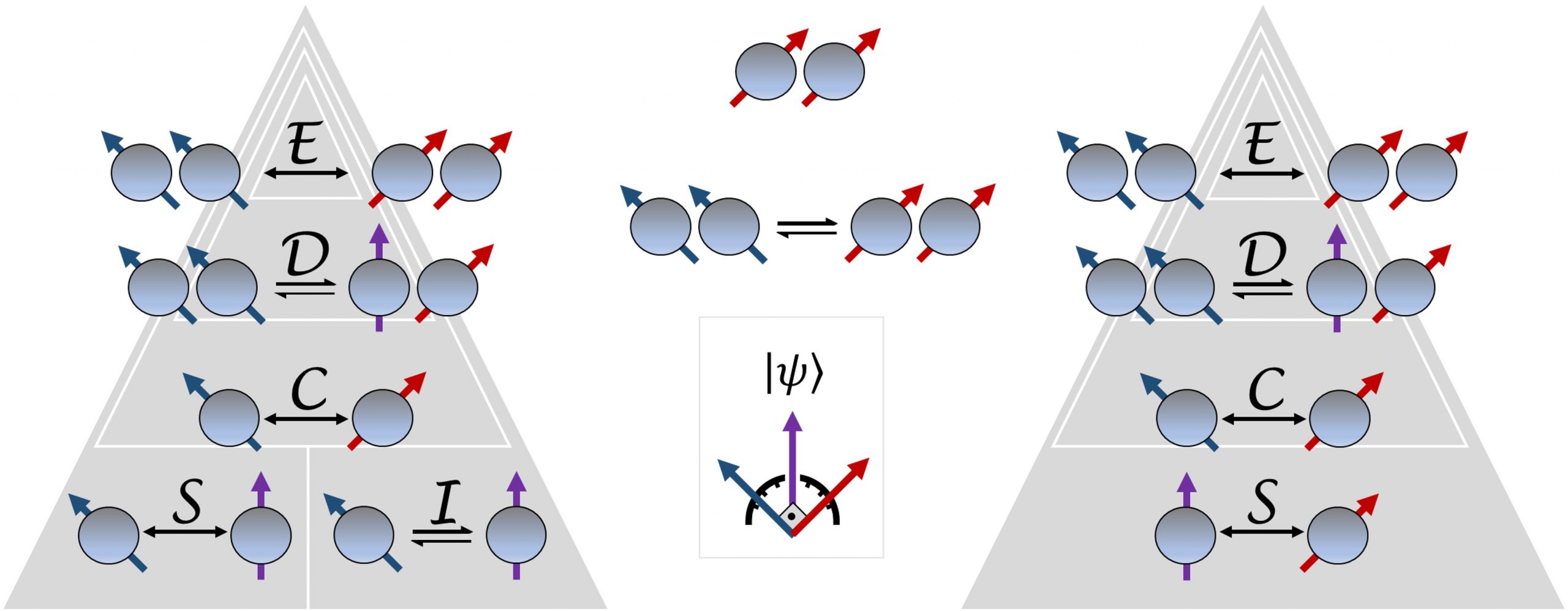
The phenomenon of quantum superposition manifests in two distinct ways: it either spreads out across non-orthogonal basis states or remains concealed within their overlaps. Despite its profound implications, the resource theory of superposition often neglects the quantum superposition residing within these overlaps. However, this component is intricately linked to a form of state indistinguishability and can give rise to quantum correlations. In this paper, we introduce a pseudo-Hermitian representation of the density operator, wherein its diagonal elements correspond to biorthogonal extensions of Kirkwood-Dirac quasi-probabilities. This representation provides a unified framework for the inter-basis quantum superposition and basis state indistinguishability, giving rise to what we term as \textit{genuine} quantum superposition. Moreover, we propose appropriate generalizations of current superposition measures to quantify genuine quantum superposition that serves as the fundamental notion of nonclassicality from which both quantum coherence and correlations emerge. Finally, we explore potential applications of our theoretical framework, particularly in the quantification of electron delocalization in chemical bonding and aromaticity.
Read More: arXiv
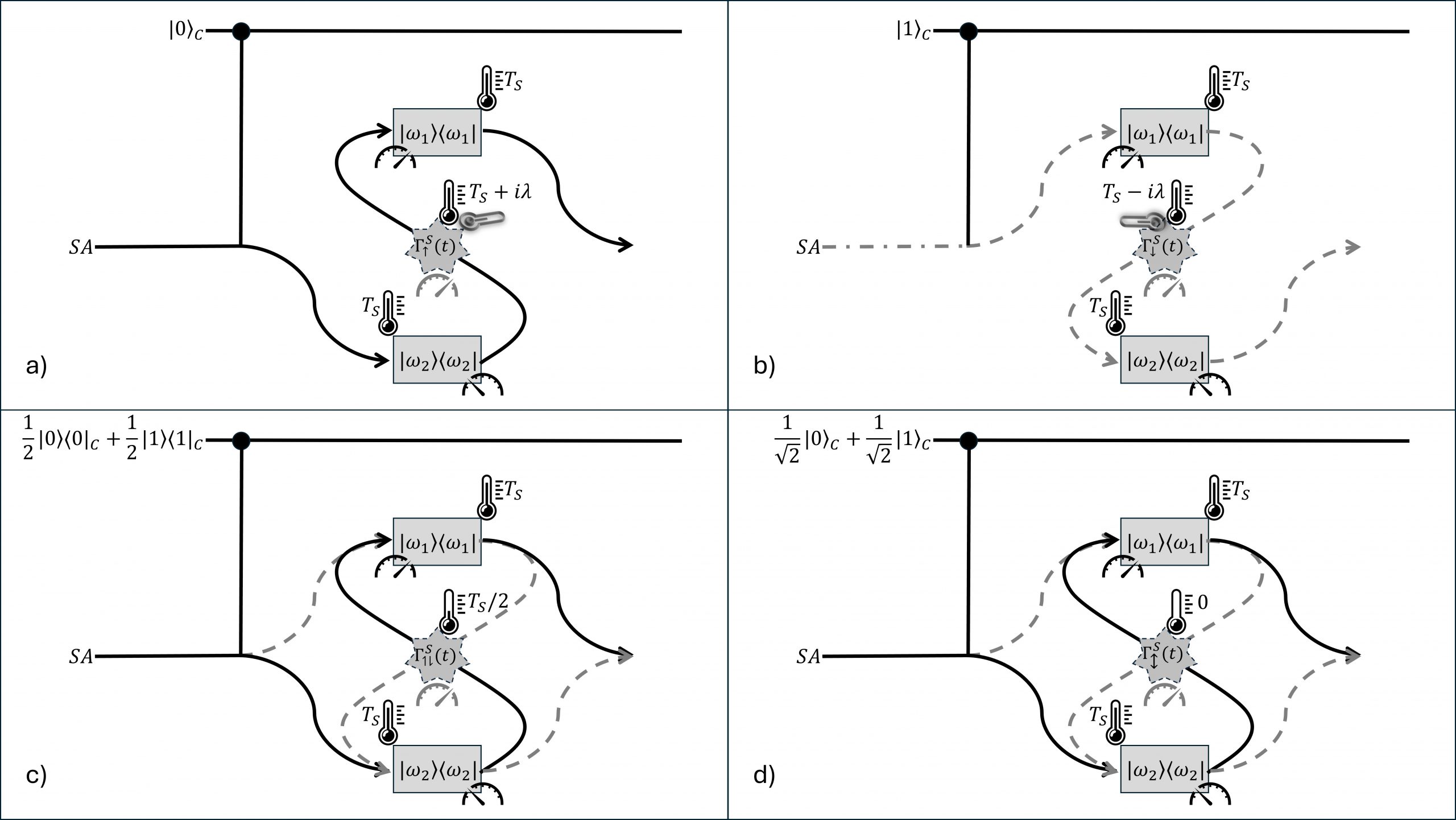
The questions we raise in this letter are as follows: What is the most general representation of a quantum state at a single point in time? Can we adapt the current formalisms to situations where the order of quantum operations is coherently or incoherently superposed? If so, what are the relations between the state at a given time and the uncertainty in the order of events before and after it? Establishing the relationship between two-state vector formalism and pseudo-density operators, we introduce the notion of a single-time pseudo-state. The tomographic construction of single-time pseudo-states is possible by ideal or weak measurements. We demonstrate that the eigenspectrum obtained from weak measurements enables us to discriminate between some coherent and incoherent superpositions of causal orders in which the same pre- and post-selection events interchange with a non-zero probability. Finally, we discuss some possible experimental realizations in existing photonic setups.
Read More: arXiv
Refereed Journal Publications
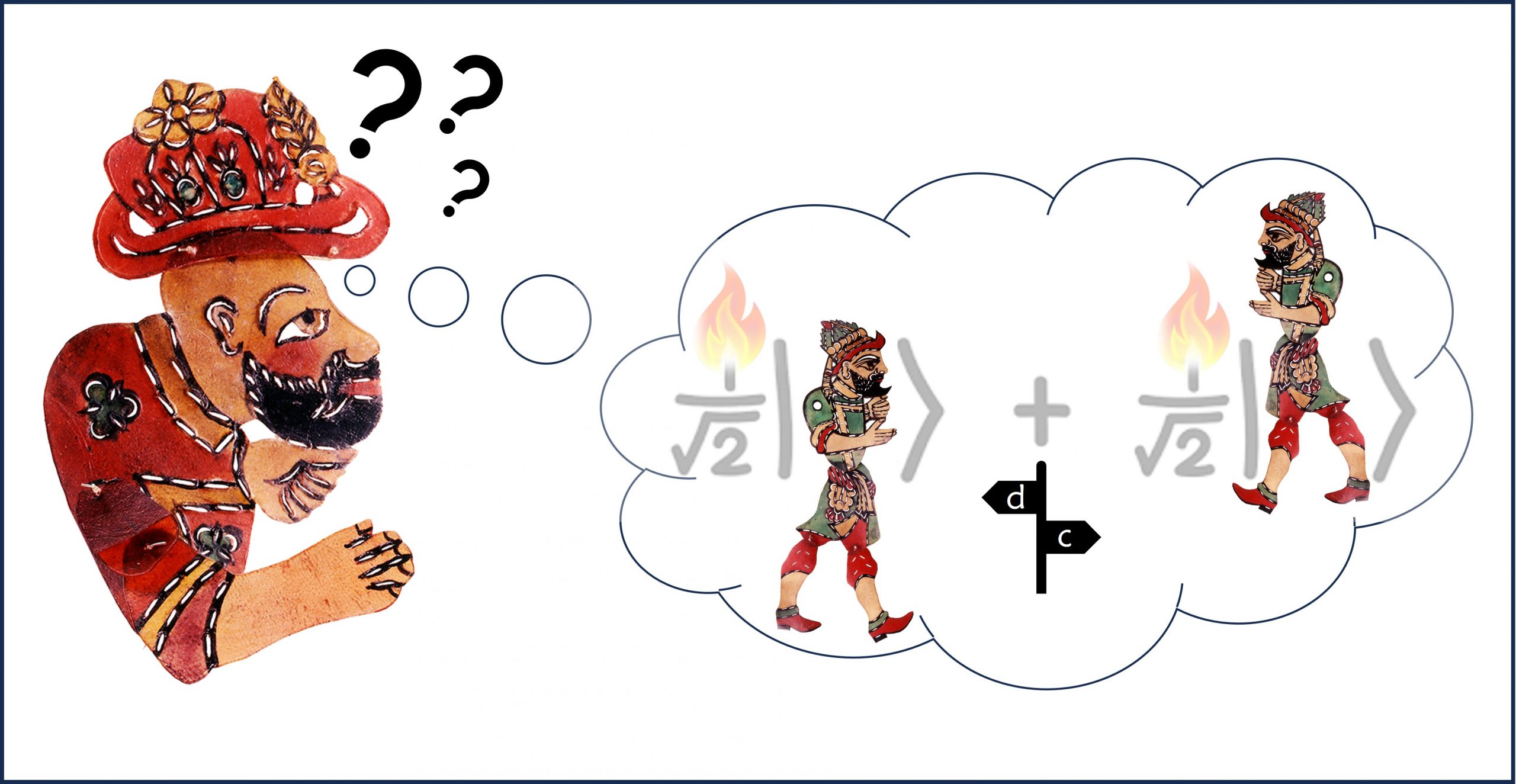
The Prisoner’s Dilemma game (PDG) is one of the simple test-beds for the probabilistic nature of the human decision-making process. Behavioral experiments have been conducted on this game for decades and show a violation of the so-called sure thing principle, a key principle in the rational theory of decision. Quantum probabilistic models can explain this violation as a second-order interference effect, which cannot be accounted for by classical probability theory. Here, we adopt the framework of generalized probabilistic theories and approach this explanation from the viewpoint of quantum information theory to identify the source of the interference. In particular, we reformulate one of the existing quantum probabilistic models using density matrix formalism and consider different amounts of classical and quantum uncertainties for one player’s prediction about another player’s action in PDG. This enables us to demonstrate that what makes possible the explanation of the violation is the presence of quantum coherence in the player’s initial prediction and its conversion to probabilities during the dynamics. Moreover, we discuss the role of other quantum information-theoretical quantities, such as quantum entanglement, in the decision-making process. Finally, we propose a three-choice extension of the PDG to compare the predictive powers of quantum probability theory and a more general probabilistic theory that includes it as a particular case and exhibits third-order interference.
Read More: the source
/ arXiv
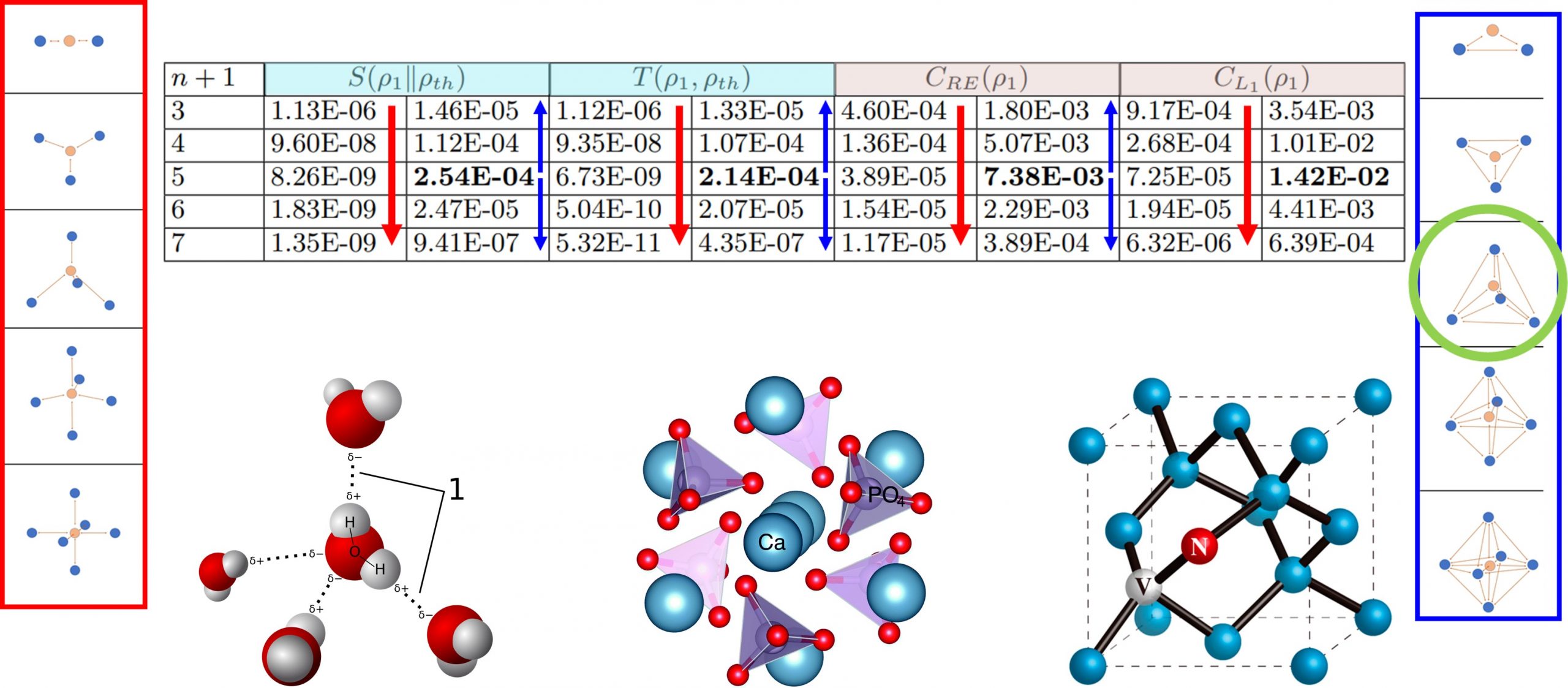
We investigate the influence of geometry on the preservation of quantum coherence in spin clusters subjected to a thermal environment. Assuming weak inter-spin coupling, we explore the various buffer network configurations that can be embedded in a plane. Our findings reveal that the connectivity of the buffer network is crucial in determining the preservation duration of quantum coherence in an individual central spin. Specifically, we observe that the maximal planar graph yields the longest preservation time for a given number of buffer spins. Interestingly, our results demonstrate that the preservation time does not consistently increase with an increasing number of buffer spins. Employing a quantum master equation in our simulations, we further demonstrate that a tetrahedral geometry comprising a four-spin buffer network provides optimal protection against environmental effects.
Read More: the source / arXiv
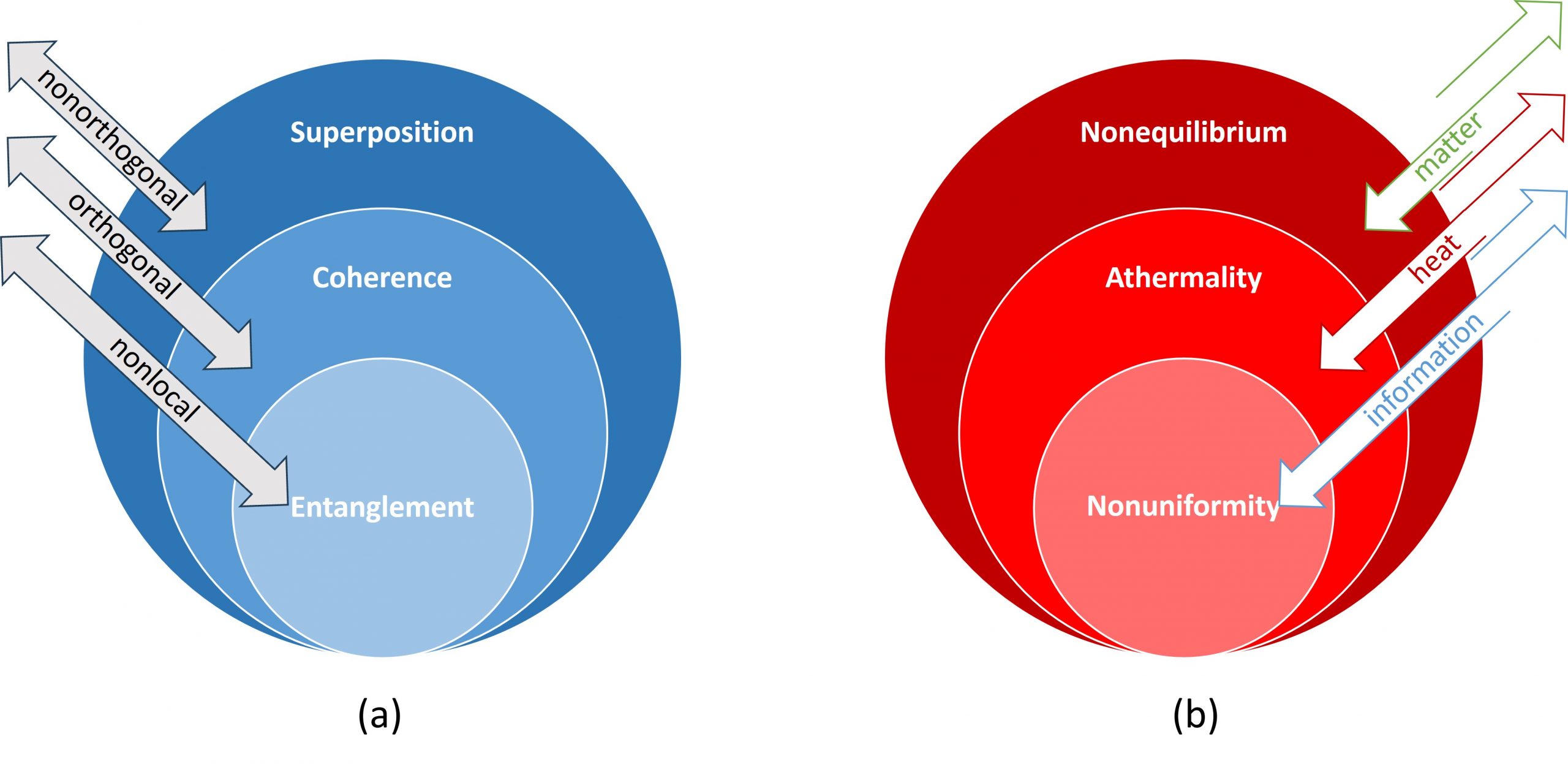
The field of quantum resource theory (QRT) has emerged as an invaluable framework for the examination of small and strongly correlated quantum systems, surpassing the boundaries imposed by traditional statistical treatments. The fundamental objective of general QRTs is to characterize these systems by precisely quantifying the level of control attainable to an experimenter. In this review article, we refrain from providing an exhaustive summary of the extensive literature on QRT. Rather, our focus centers on a specific subliterature founded upon the theory of majorization. The primary aim is to augment our comprehension of genuine quantum phenomena manifested across diverse technological applications and incite investigations into novel resource theories encompassing multiple types of resources. Consequently, we emphasize the underlying similarities shared by various resources, including bipartite quantum entanglement, quantum coherence, and superposition, alongside informational, thermal, and generalized nonequilibrium resources.
Read More: the source
/ arXiv
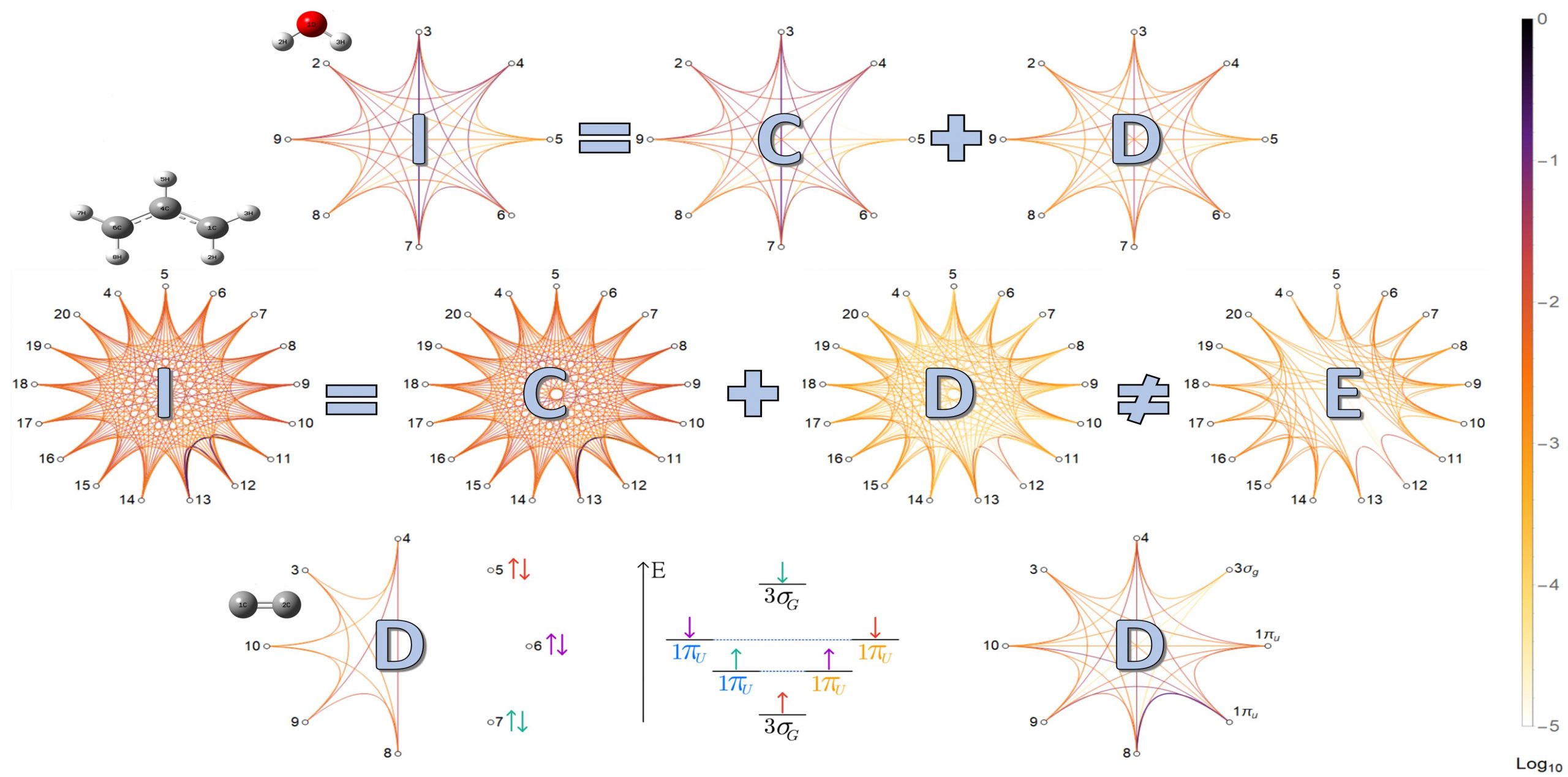
The quantum superposition principle has been extensively utilized in the quantum mechanical description of bonding phenomenon. It explains the emergence of delocalized molecular orbitals and provides a recipe for the construction of near-exact electronic wavefunctions. On the other hand, its existence in composite systems may give rise to nonclassical correlations that are regarded as a resource in quantum technologies. Here, we approach the electronic ground states of three prototypical molecules in the light of the framework set by fermionic information theory. By introducing the notion of orbital discord, we additively decompose the pairwise orbital correlations into their classical and quantum parts in the presence of superselection rules. We observe that quantum orbital correlations can be stronger than classical orbital correlations though not often. Moreover, quantum orbital correlations can survive even in the absence of orbital entanglement depending on the symmetries of the constituent orbitals. Finally, we demonstrate that orbital entanglement would be underestimated if the orbital density matrices were treated as qubit states.
Read More: the source
/ arXiv
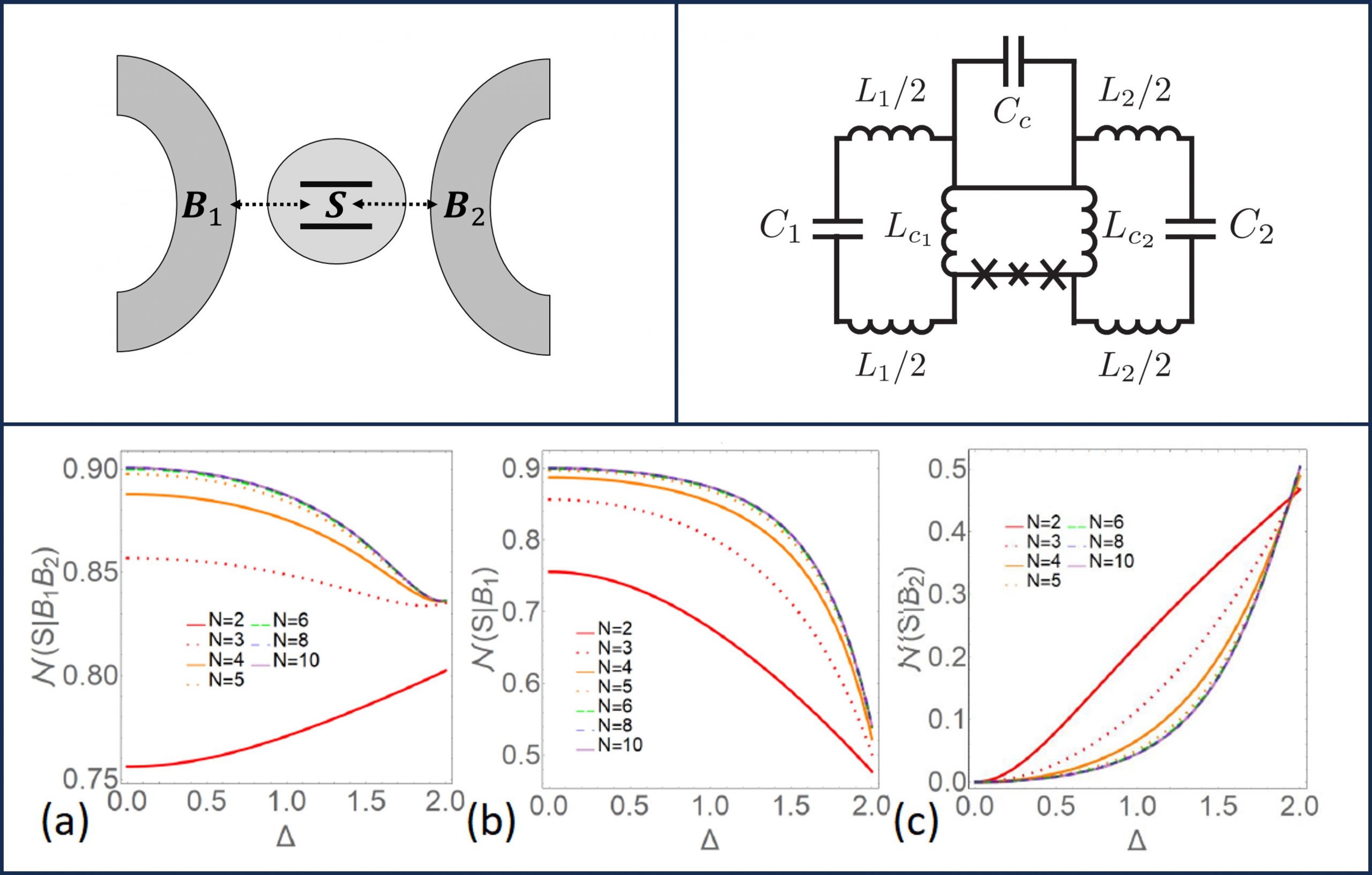
We explore quantum correlations, in particular, quantum entanglement, among vibrational phonon modes as well as between electronic and vibrational degrees of freedom in molecular systems, described by Jahn-Teller mechanism. Specifically, to isolate and simplify the phonon- electron interactions in a complex molecular system, the basis of our discussions is taken to be the proposal of simulating two-frequency Jahn- Teller systems using superconducting circuit quantum electrodynamics systems (circuit QED) by Tekin Dereli and co-workers in 2012. We evaluate the quantum correlations, in particular entanglement between the vibrational phonon modes, and present analytical explanations using a single privileged Jahn-Teller mode picture. Furthermore, spin-orbit entanglement or quantum correlations between electronic and vibrational degrees of freedom are examined. We conclude by discussing experimental feasibility to detect such quantum correlations, considering the dephasing and decoherence in state-of-the-art superconducting two-level systems (qubits).
Read More: the source
/ arXiv
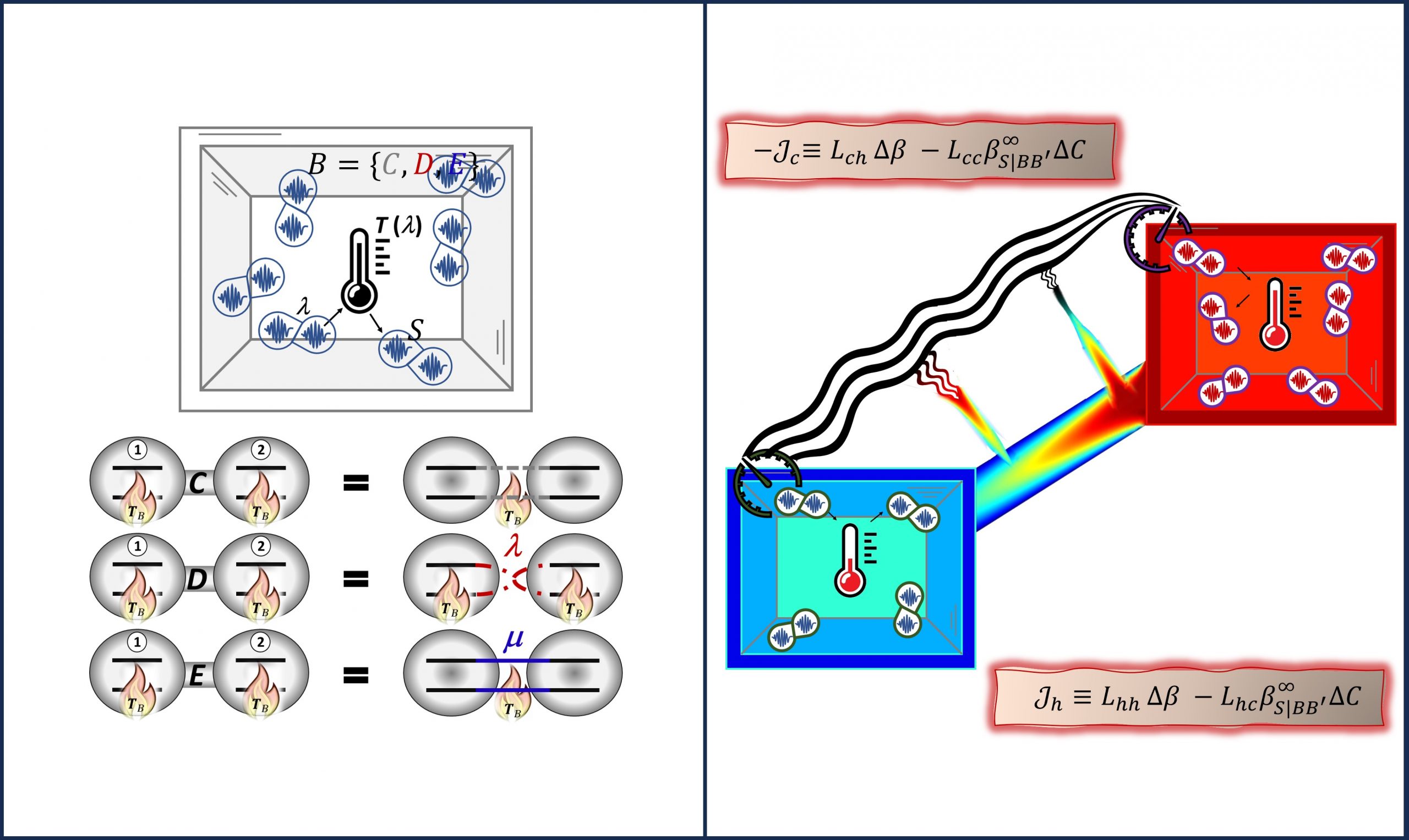
The role of quantum coherence and correlations in heat flow and equilibration is investigated by exploring the Rayleigh’s dynamical problem to equilibration in the quantum regime and following Onsager’s approach to thermoelectricity. Specifically, we consider a qubit bombarded by two-qubit projectiles from a side. For arbitrary collision times and initial states, we develop the master equation for sequential and collective collisions. By deriving the Fokker-Planck equation out of the master equation, we identify the quantum version of the Rayleigh’s heat conduction equation. We find that quantum discord and entanglement shared between the projectiles can contribute to genuine heat flow only when they are associated with so-called heat-exchange coherences. Analogous to Onsager’s use of Rayleigh’s principle of least dissipation of energy, we use the entropy production rate to identify the coherence current. Both coherence and heat flows can be written in the form of quantum Onsager relations, from which we predict coherent Peltier and coherent Seebeck effects. The effects can be optimized by the collision times and collectivity. Finally, we discuss some of the possible experimental realizations and technological applications of the thermocoherent phenomena in different platforms.
Read More: the source
/ arXiv
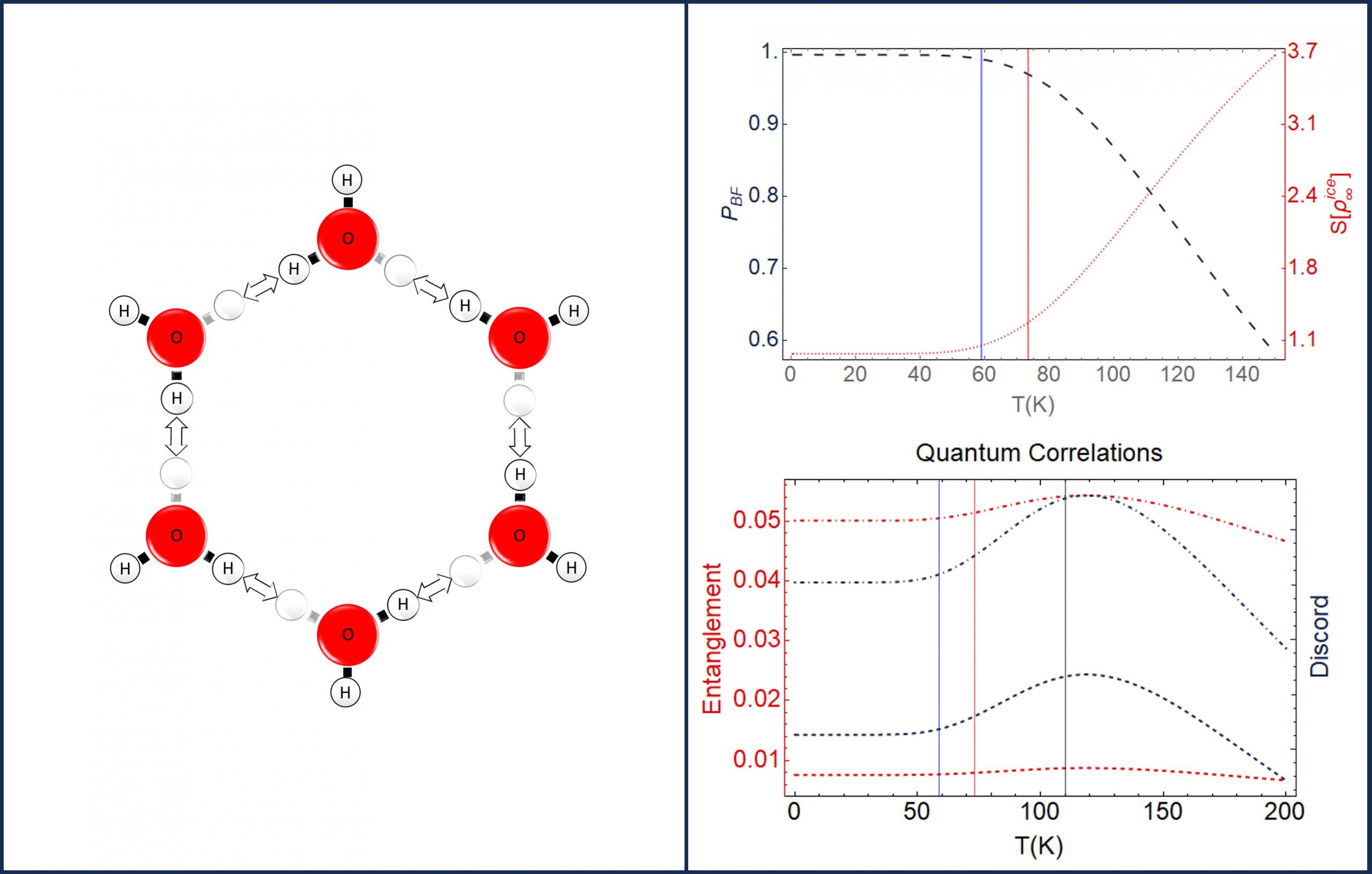
Several experimental and theoretical studies report instances of concerted or correlated multiple proton tunnelling in solid phases of water. Here, we construct a pseudo-spin model for the quantum motion of protons in a hexameric H2O ring and extend it to open system dynamics that takes environmental effects into account in the form of O–H stretch vibrations. We approach the problem of correlations in tunnelling using quantum information theory in a departure from previous studies. Our formalism enables us to quantify the coherent proton mobility around the hexagonal ring by one of the principal measures of coherence, the l1 norm of coherence. The nature of the pairwise pseudo-spin correlations underlying the overall mobility is further investigated within this formalism. We show that the classical correlations of the individual quantum tunnelling events in long-time limit is sufficient to capture the behaviour of coherent proton mobility observed in low-temperature experiments. We conclude that long-range intra-ring interactions do not appear to be a necessary condition for correlated proton tunnelling in water ice.
Read More: the source
/ arXiv
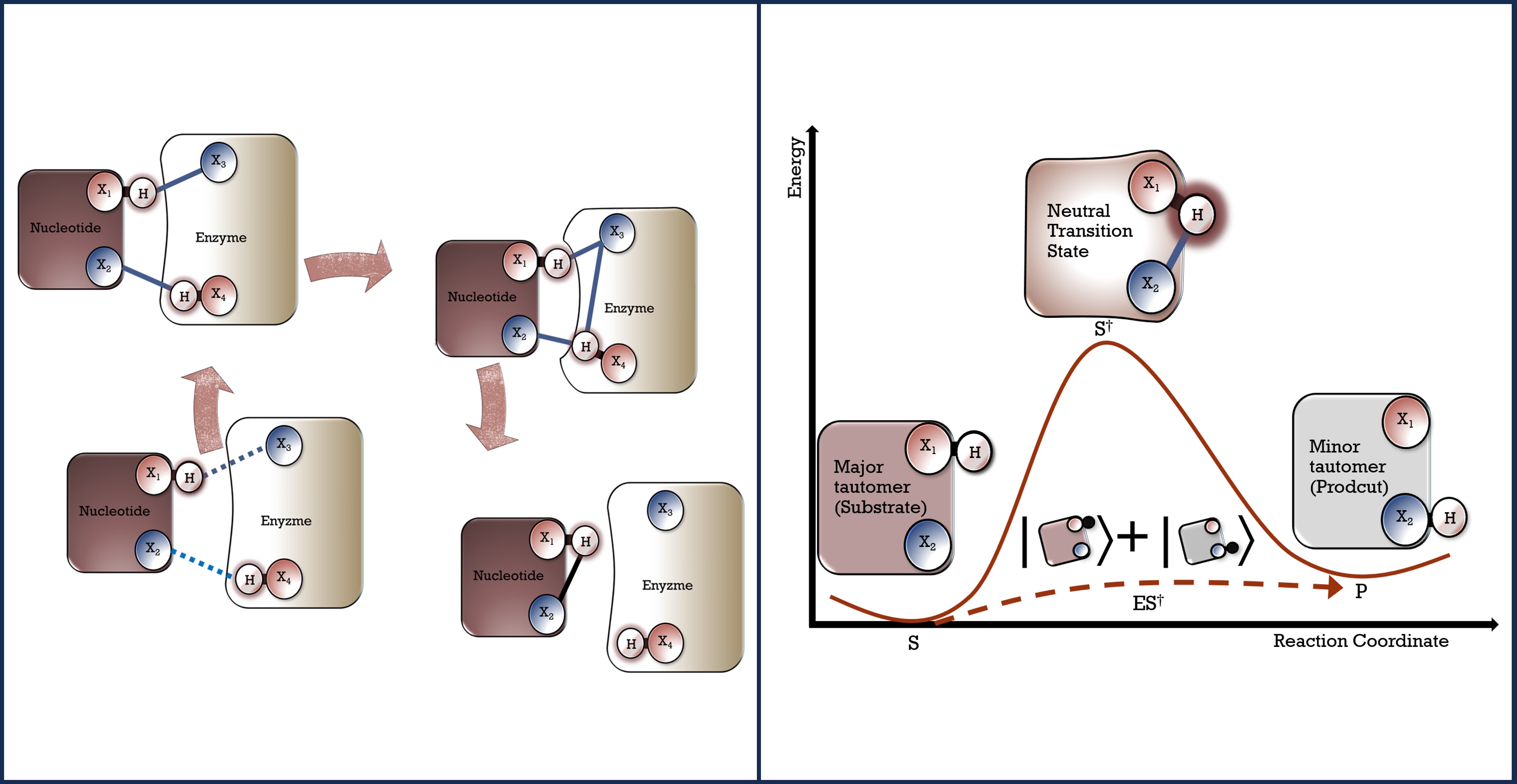
The role of proton tunnelling in biological catalysis is investigated here within the frameworks of quantum information theory and thermodynamics. We consider the quantum correlations generated through two hydrogen bonds between a substrate and a prototypical enzyme that first catalyses the tautomerization of the substrate to move on to a subsequent catalysis, and discuss how the enzyme can derive its catalytic potency from these correlations. In particular, we show that classical changes induced in the binding site of the enzyme spreads the quantum correlations among all of the four hydrogen-bonded atoms thanks to the directionality of hydrogen bonds. If the enzyme rapidly returns to its initial state after the binding stage, the substrate ends in a new transition state corresponding to a quantum superposition. Open quantum system dynamics can then naturally drive the reaction in the forward direction from the major tautomeric form to the minor tautomeric form without needing any additional catalytic activity. We find that in this scenario the enzyme lowers the activation energy so much that there is no energy barrier left in the tautomerization, even if the quantum correlations quickly decay.
Read More: the source
/ arXiv
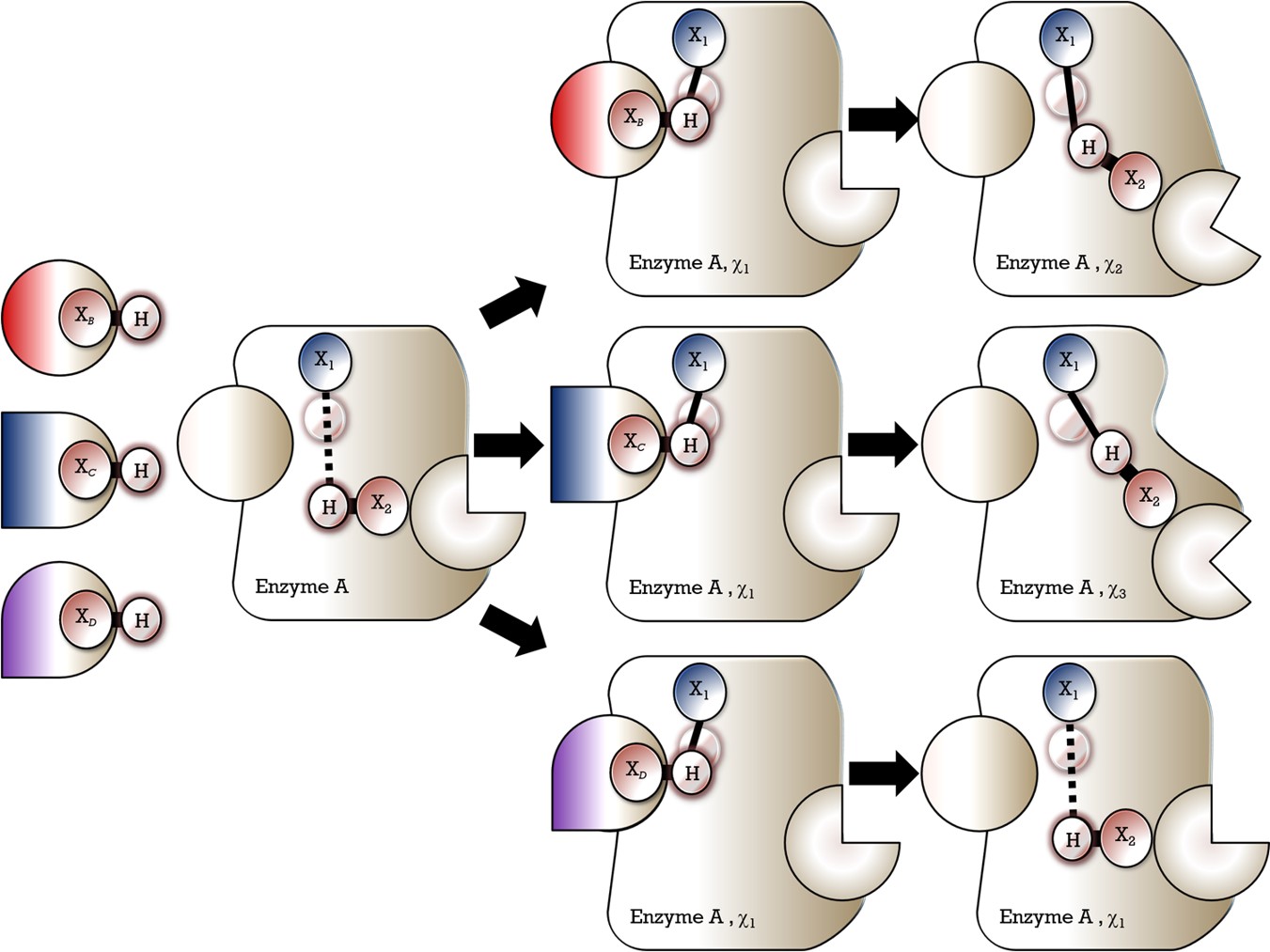
Quantum tunneling events occurring through biochemical bonds are capable of generating quantum correlations between bonded systems, which in turn makes the conventional second law of thermodynamics approach insufficient to investigate these systems. This means that the utilization of these correlations in their biological functions could give an evolutionary advantage to biomolecules to an extent beyond the predictions of molecular biology that are generally based on the second law in its standard form. To explore this possibility, we first compare the tunneling assisted quantum entanglement shared in the ground states of covalent and hydrogen bonds. Only the latter appears to be useful from a quantum information point of view. Also, significant amounts of quantum entanglement can be found in the thermal state of hydrogen bond. Then, we focus on an illustrative example of ligand binding in which a receptor protein or an enzyme is restricted to recognize its ligands using the same set of proton-acceptors and donors residing on its binding site. In particular, we show that such a biomolecule can discriminate between 3n−1 agonist ligands if it uses the entanglement shared in n intermolecular hydrogen bonds as a resource in molecular recognition. Finally, we consider the molecular recognition events encountered in both the contemporary genetic machinery and its hypothetical primordial ancestor in pre-DNA world, and discuss whether there may have been a place for the utilization of quantum entanglement in the evolutionary history of this system.
Read More: the source
/ arXiv

